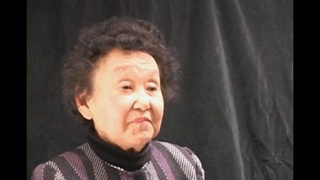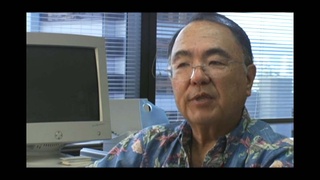Interviews
My daughter’s identity (Japanese)
(Japanese) I let my daughter decide it. I don’t tell her that she is Brazilian or Nikkei. I let her find it as her school environment changes.
Well, it’s because I believe that the place we live in now is a very good environment for my daughter, with a lot of foreigners around, and she can naturally interact with Japanese children who interact with many foreigners. I feel like such environment is the best for her now. And in the future, though, as she grows up and when she leaves Oizumi-machi, Ota city, people around her, they might say something that troubles her. But to prepare for when such thing happens, to make ourselves proud of this place where we have connections to Brazil and Japan, we just need to work hard.
Date: October 18, 2016
Location: Gunma, Japan
Interviewer: Shigeru Kojima
Contributed by: Watase Media Arts Center, Japanese American National Museum
Explore More Videos


Going back to Hawaii
An expert researcher and scholar on Japanese immigrant clothing.

Clothes of plantation workers
An expert researcher and scholar on Japanese immigrant clothing.

Brother leaves for war, survival
An expert researcher and scholar on Japanese immigrant clothing.

Food growing up
(b.1948) Nikkei from Southern California living in Japan.

Relationship with my father
(b. 1920) Incarcerated during World War II. Active member of the Japanese Canadian community


Arranged marriage
(b.1912) Japanese Canadian Issei. Immigrated with husband to Canada in 1931

Marrying Bob against family’s wishes
(b.1920) Japanese Canadian Nisei. Established the Ikenobo Ikebana Society of Toronto

Growing up in a Japanese American family
(b. 1967) Hawai`i-born professional fighter in Japan

Death of sister in October 1942
(1915 - 2011) Nisei florist who resettled in New York City after WW II. Active in Japanese American civil rights movement

Learning Japanese at school and at home with family
(b.1951) Co-founder and managing director of San Jose Taiko.



Being accepted as biracial family
(b.1944) Founder of Kobayashi Group, LLC
